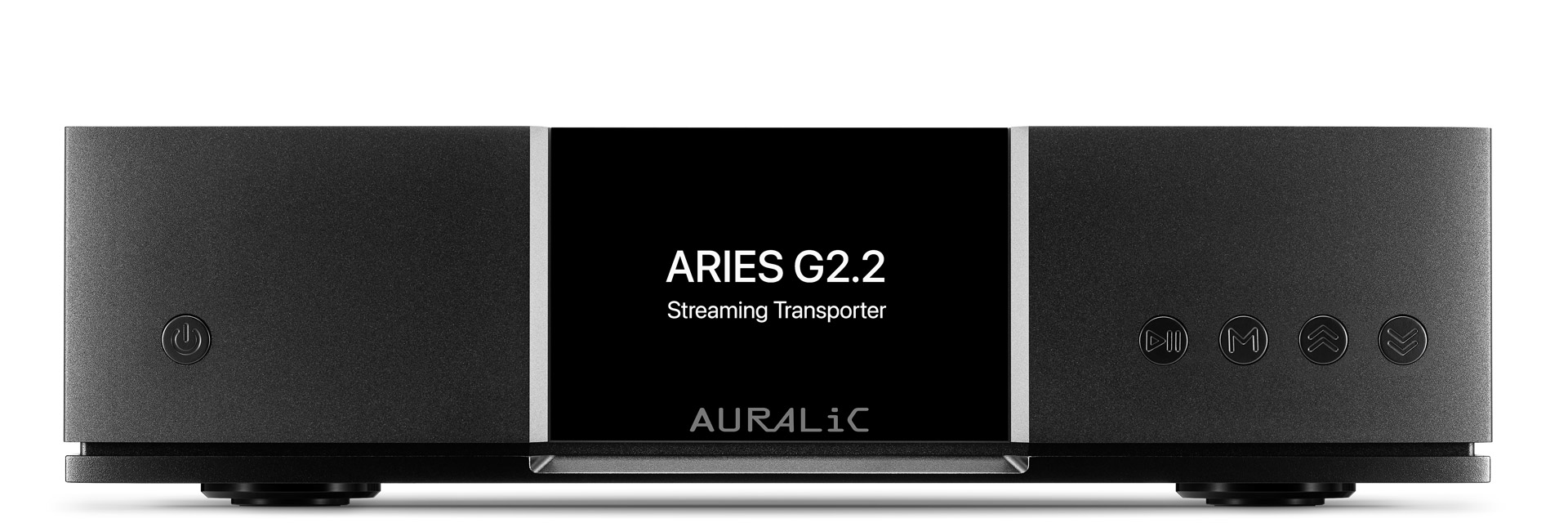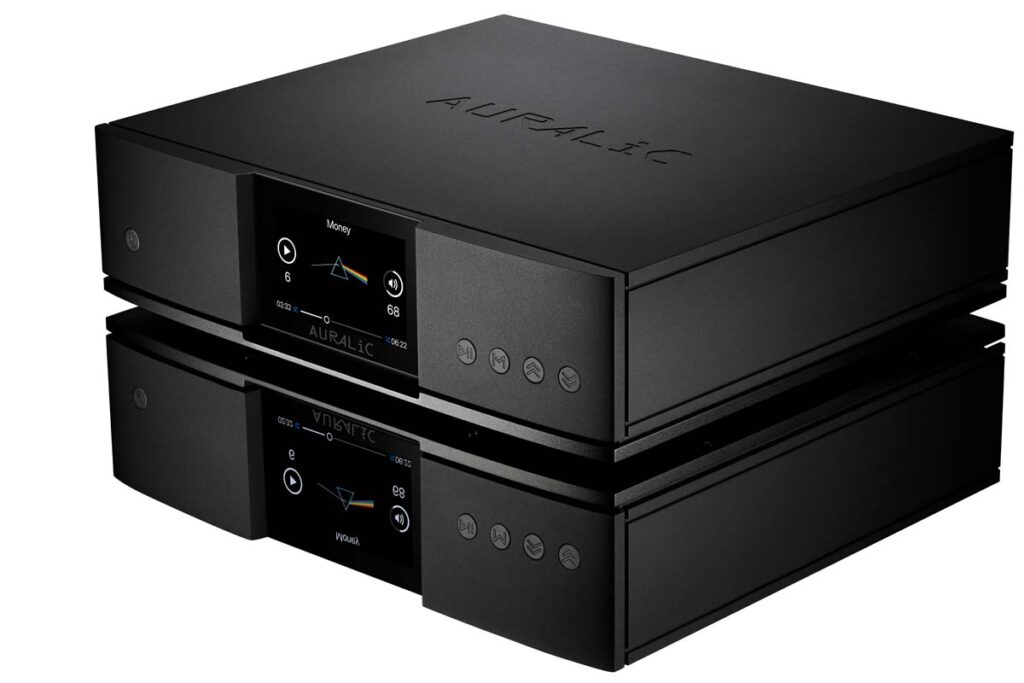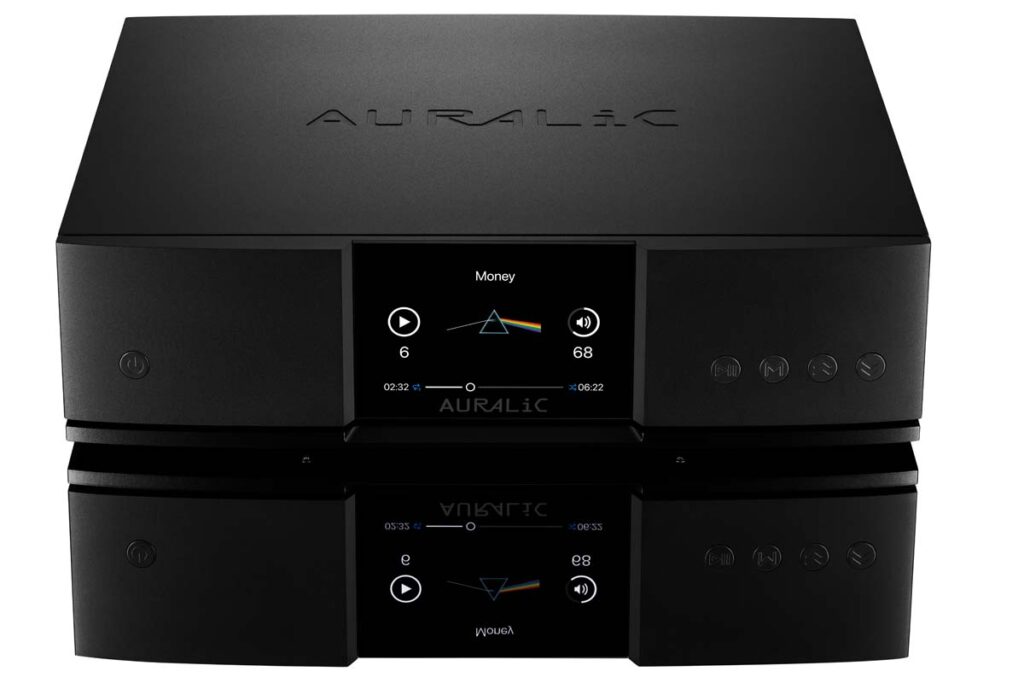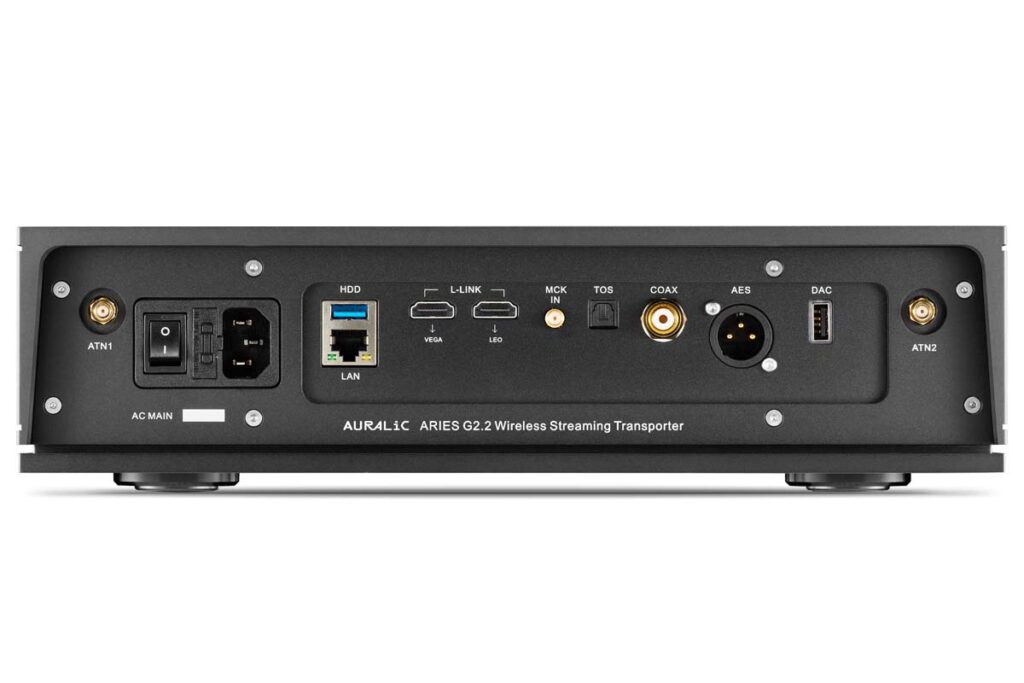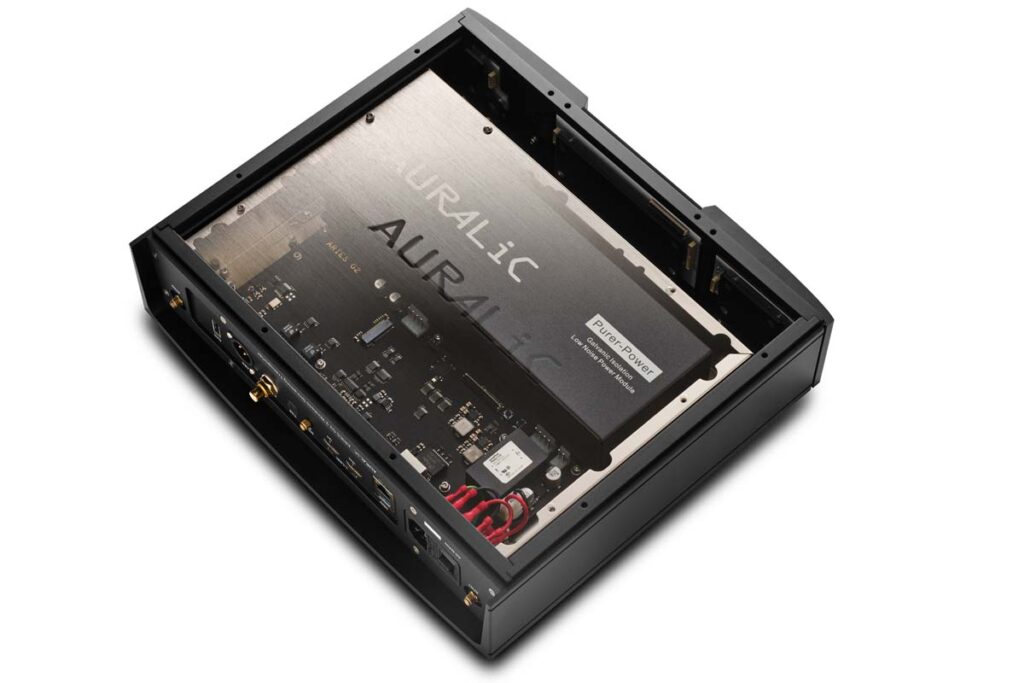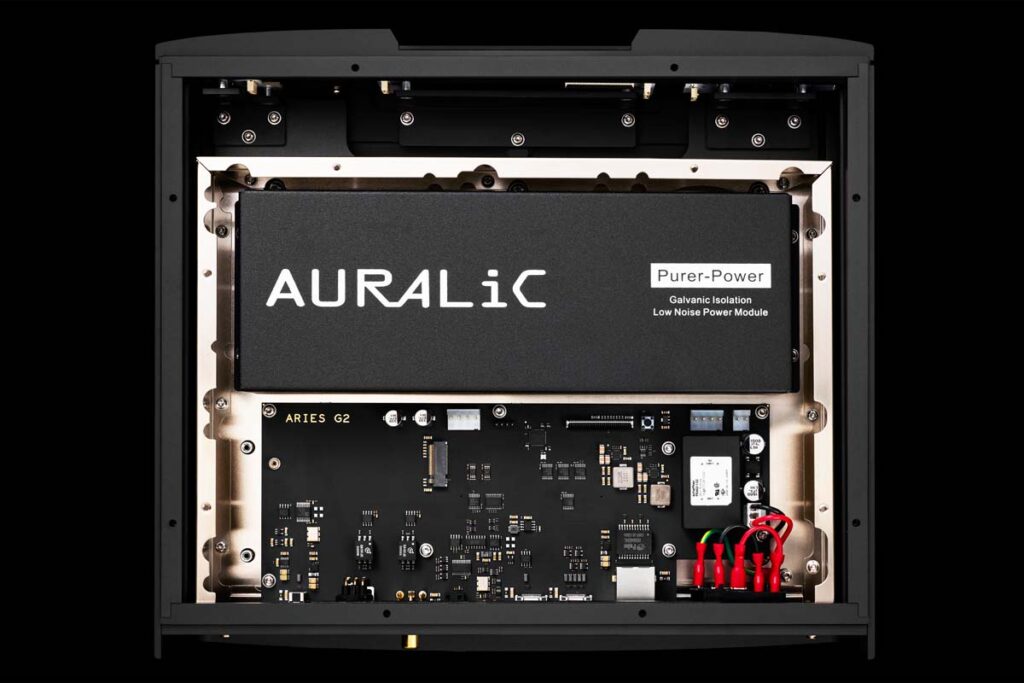Auralic’s new streaming bridge boasts computing power to rival a gaming PC – but it looks better and, fortunately, can do fewer things.
Among seasoned enjoyers of distinguished sound, you won’t typically see anyone cock their eyebrow in surprise at the sight of a hi-fi chain that consists of as many individual components as possible – no question: you need a phono preamplifier, monoblocks are generally not a waste of money, and a highly individualized combination of turntable, tonearm and pickup is also nice to see. This is the only way to get reasonably close to the sound you dream of and, as a side effect, you also have a nice, never-ending topic of conversation. When it comes to digital audio, quite the opposite has traditionally been the case: Since April 1981, when the CD-DA was introduced at the Easter Festival in Salzburg, the trend has been towards the most compact, highly integrated solutions possible. Of course, this is due to a kind of sensory illusion: if you can’t see files as opposed to sound grooves, then it is unlikely that you will hear any significant differences in their playback.
Of course, there is reason to believe that most of the sonic limitations of digital playback are no longer due to data processing quality at home or codecs – provided we set aside the debate about MQA for a moment. What is probably more decisive is what was done to the music before it became a file, how the streaming services process it and the effects of exceeding “LUFS” limits (highly efficient limiters). And that’s exactly why you want a digital playback chain that provides you with as much detailed information about the material as possible.
Enter the Auralic Aries G2.2: Yes, it is a streaming bridge, sorry, a “streaming transport”, as the distributor and manufacturer call it. In fact, the device does nothing other than receive data – for example from a local server or a streaming service – and forward it to an external DAC. A glance at the rear already gives it away: two antenna sockets for interference-free tri-band WiFi, plus Toslink, Coax, AES/EBU, USB, two Lightning ports and an input for an external master clock. Analog outputs: nil return – by design!
Auralic is very familiar with this type of device; after all, they invented this niche themselves, so to speak, when one of the first devices of this type appeared around ten years ago with the Aries. The Aries G2.2 now follows on from the G2.1. At first glance, little has changed on the outside: it is of high quality, and the weight of just over ten kilos makes it immediately clear that this is not just any technical toy. The build quality is extremely high. The chassis consists of an aluminum frame with a nickel-coated copper layer on the inside for shielding reasons. The whole thing rests on decoupling feet, which are fitted with a spring; this ensures that the device always floats midway along their travel range. Located in the middle of the front panel, the display shows the cover and metadata in play mode and can be switched to the menu display by pressing a button. There is not much in the way of physical controls. There are buttons for “Play”, for “Menu”, for up and down as well as for switching on and off.
Inside, however, no component has been left unchanged. Purportedly, 90 percent of the inner workings have been redone compared to its predecessor. The Auralic Aries G2.2 now works with a quad-core processor with 64-bit architecture, which should result in eight times the computing capacity of its predecessor. One gigabyte of the four GB RAM is reserved for caching, so that the processor cores should never run out of stuff to work on. Auralic calls this configuration “Tesla G3”, and its task is to reduce latency and jitter by connecting the main memory directly to the input and output channels via Direct Memory Access and also providing direct access to the hardware and software that is crucial for sound quality. Furthermore, the electrical circuits for clock, signal processing and transmission are galvanically isolated, which is intended to minimize electromagnetic interference. “Auralic actually developed the necessary inductive coupling itself,” reveals Christian Rechenbach from DREI H Sales. “The typical optocouplers didn’t have the required bandwidth.” Overall, the “Tesla 3” platform based on the Fedora distribution of Linux is characterized by a high degree of in-house development – from its own playback engine, which ensures that DSD is really recognized correctly, to the double power supply, which is also galvanically isolated. On the format side, the Aries can do everything you could wish for and is Roon-compatible. “This is a future platform on which future generations will also be based. You don’t really need that much power at the moment.”
Now let’s find out what the streaming bridge sounds like. But wait, a little more patience is required first, because logically, the sound calculator needs to boot up first, which is admittedly a rather lengthy process. When setting up for the first time, the Internet coordinates of the WLAN must also be entered, which is, as expected, a little fiddly in the menu view of the display (which explains all the operating options with helpful explanatory texts). It’s easier via the web interface using a smart device or computer. Incidentally, there is no remote control, as everything can be done via the web interface and the common apps anyway. This keeps the living room table tidy, and if you still don’t want to do without a remote control, you can teach the Auralic how to use any RC5 remote.
Beyond that, though, there’s no reason to complain. From that point on, we can listen to music in a way that will quickly make you lose interest in intellectual topics. A common streaming use case is trying out music that you don’t have physically in stock and that you’re not even thinking about buying. In my case, this includes Texas Hold’em, the new single by Beyoncé. This is a decently elaborate production, but it was primarily mixed and mastered with a mobile phone listening situation in mind. This is usually reflected in the rather impeccable mids, excellent speech intelligibility and a more than well-intentioned bass reproduction. The G2.2 manages to break down the largely undamped bass drum very nicely in terms of impact and sustain – and since it is a soft mallet, we are talking about the range below 100 hertz. Nothing booms, everything is clear and radiant.
Let’s try good old rock music, which in many cases has not survived the digital transformation quite as well as jazz and classical music and which is often difficult to stream for long periods without tiring. A good example is the album Stain by Living Color, which comes with an overambitious bass (Doug Wimbish!) and a Hendrix-like guitar sound that is completely overdrawn in the 90s sense. Usually, what is meant to be a broad guitar wall often sounds like it was produced using cheap guitar amp emulations. But the Aries, here in combination with the likewise new Auralic Vega G2.2 DAC, projects the banging into the room in a multi-faceted and “warm” way. Nothing seems one-dimensional, you suddenly understand again what was so sensational about those Mesa boogie amps back then – and you not only understand it, you can also experience it.
For a machine that basically only receives and outputs data, the Auralic Aries G2.2 does an astonishing amount – and not just at the IT level, but also in terms of feel. And so the streaming bridge can be a sensible purchase if you already have a DAC that you no longer want to give away, or if you want to upgrade your digital chain by getting rid of the ballast of the multimedia battleships and delegating various tasks to individual components that can do this in a professional and specialized way. In this case, this costs around 6000 euros, which is significantly more than a McDonald’s Happy Meal, but also offers a whole different value proposition, and so is not too much given a suitable environment.
Accompanying Equipment
CD player: Creek Evo 2 | DAC/network player: Cambridge Audio CXN, Teac UD-701N | Amplifier: Creek Evo IA, Teac AP-701 | Loudspeakers: Neat Momentum 4i, Bryston Mini A, Focal Alpha 80
Streaming bridge Auralic Aries G2.2
Concept: Streaming bridge without integrated D/A converter | Digital inputs: coaxial (RCA), optical (Toslink), USB | Digital outputs: coaxial (RCA), optical (Toslink), AES/EBU | Supported formats: AAC, AIFF, ALAC, APE, DIFF, DSD, DSF, FLAC, MP3, MQA, OGG, WAV, WMA, WV | Sampling rates: PCM: 44.1 KHz to 384 KHz in 32Bit, DSD: DSD64 (2.8224 MHz), DSD128 (5.6448 MHz), DSD256 (11.2896 MHz), DSD512 (22.57892 MHz) | Network: Ethernet, 802.11b/g/n/ac tri-band WiFi | Special features: Available with 4 TB NVME storage (surcharge €600) | Finish: Black | Dimensions (W/H/D): 34/10/32 cm | Weight: 10 kg | Warranty period: 2 years (can be extended to 3 years) | Price: around 6000 €
DREI H
Kedenburgstraße 44/House D
22041 Hamburg
Phone +49 40 37507515

